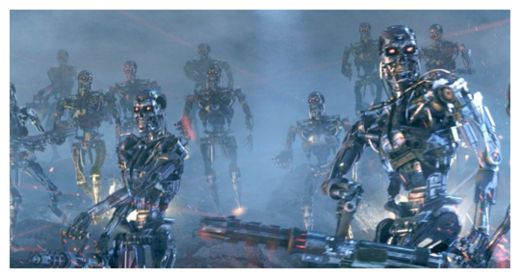The military's advanced research group recently put out a call, or Request For information, on how it could develop systems that go beyond machine learning, Bayesian techniques, and graphical technology to solve "extraordinarily difficult recognition problems in real-time."
Current systems offer partial solutions to this problem, but are limited in their ability to efficiently scale to larger more complex datasets, DARPA said. "They are also compute intensive, exhibit limited parallelism, require high precision arithmetic, and, in most cases, do not account for temporal data. "
What DARPA is interested in is looking at mimicking a portion of the brain known as the neocortex which is utilized in higher brain functions such as sensory perception, motor commands, spatial reasoning, conscious thought and language. Specfically, DARPA said it is looking for information that provides new concepts and technologies for developing what it calls a "Cortical Processor" based on Hierarchical Temporal Memory.
"Although a thorough understanding of how the cortex works is beyond current state of the art, we are at a point where some basic algorithmic principles are being identified and merged into machine learning and neural network techniques. Algorithms inspired by neural models, in particular neocortex, can recognize complex spatial and temporal patterns and can adapt to changing environments.
Consequently, these algorithms are a promising approach to data stream filtering and processing and have the potential for providing new levels of performance and capabilities for a range of data recognition problems," DARPA stated. "The cortical computational model should be fault tolerant to gaps in data, massively parallel, extremely power efficient, and highly scalable. It should also have minimal arithmetic precision requirements, and allow ultra-dense, low power implementations."
Some of the questions DARPA is looking to answer include:
- What are the capabilities and limitations of HTM-like algorithms for addressing real large-scale applications?
- What algorithm or algorithms would a cortical processor execute?
- What opportunities are there for significant improvements in power efficiency and speed that can be achieved by leveraging recent advances in dense memory structures, such as multi-level floating gates, processors in memory, or 3D integration?
- What is the best trade-off between flexibility (or configurability) and performance?
- Is it possible to build specialized architectures that demonstrate sufficient performance, price and power advantages over mainline commercial silicon to justify their design and construction?
- What new capabilities could a cortical processor enable that would result in a new level of application performance?
- What entirely new applications might be possible if a cortical processor were available to you?
- What type of metric could be used for measuring performance and suitability to task
Recently IBM said it created DARPA-funded prototype chips that could mimic brain-like actions.
The prototype chips will give mind-like abilities for computers to make decisions by collating and analyzing immense amounts of data, similar to humans gathering and understanding a series of events, Dharmendra Modha, project leader for IBM Research told the IDG News Service. The experimental chips, modeled around neural systems, mimic the brain's structure and operation through silicon circuitry and advanced algorithms.
IBM hopes reverse-engineering the brain into a chip could forge computers that are highly parallel, event-driven and passive on power consumption, Modha said. The machines will be a sharp departure from modern computers, which have scaling limitations and require set programming by humans to generate results.
Like the brain, IBM's prototype chips can dynamically rewire to sense, understand and act on information fed via sight, hearing, taste, smell and touch, or through other sources such as weather and water-supply monitors. The chips will help discover patterns based on probabilities and associations, all while rivaling the brain's compact size and low power usage, Modha said.




Reader Comments
to our Newsletter